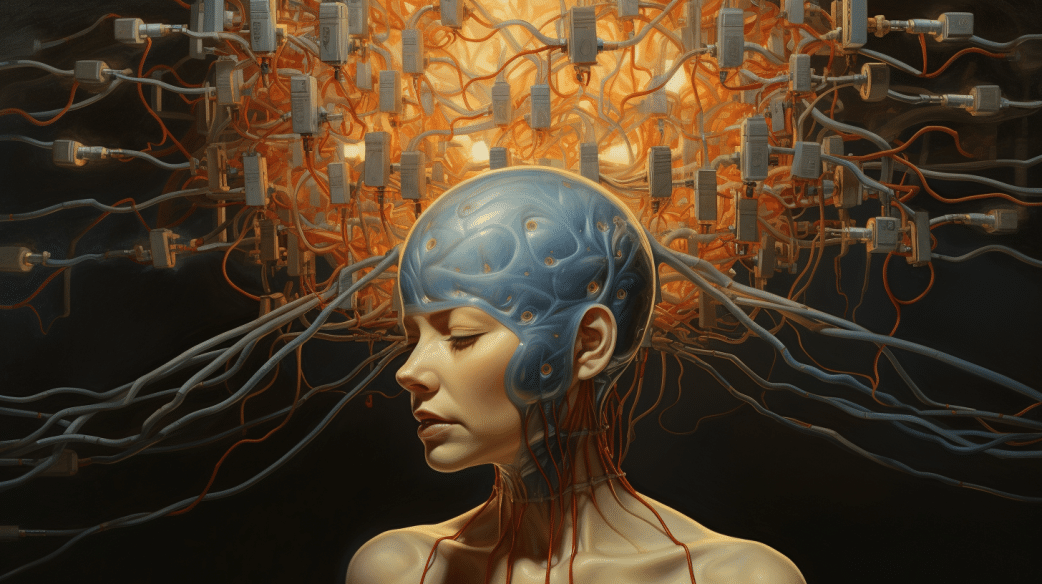Obsessive-compulsive disorder (OCD) is a challenging psychiatric illness affecting 2% of the population.
While some patients respond to therapy and medications, others continue to suffer from severe, treatment-resistant symptoms.
Exciting new research shows that directly modulating brain activity through neuromodulation techniques can provide relief for these patients.
Key Facts:
- OCD involves dysfunction in brain networks including the orbitofrontal, limbic, default mode and salience networks.
- Non-invasive neuromodulation techniques like transcranial magnetic stimulation (TMS) and transcranial direct current stimulation (tDCS) can improve OCD symptoms by altering activity in brain regions like the medial prefrontal cortex.
- Invasive neuromodulation through deep brain stimulation targets areas like the ventral capsule/ventral striatum to modulate problematic brain circuits.
- While more research is still needed, neuromodulation provides new hope for treating severe, treatment-resistant OCD.
Source: Front Neurol. 2022
The Complex Neurobiology of OCD
Decades of research have revealed OCD to be a disorder of brain circuitry, involving multiple neural networks.
Early models focused on hyperactivity in individual brain regions like the orbitofrontal cortex and caudate nucleus.
However, experts now recognize OCD as a network-based disorder, with dysfunctional connectivity within and between key brain circuits.
Several cortico-striato-thalamo-cortical (CSTC) loops seem especially important.
The lateral orbitofrontal cortex (OFC) connects with the ventral medial caudate nucleus in a loop regulating cognitive flexibility and habit formation.
Disruption here may explain persistence of obsessive thoughts and compulsive rituals.
The limbic loop links areas like the nucleus accumbens, amygdala and medial OFC, critical for emotion and reward-motivated behavior.
Dysfunction in this circuit could underlie deficits in reward learning and impaired cognitive control of compulsions.
Meanwhile, the salience network involving the anterior cingulate and insula modulates attention and response inhibition.
Failure to properly regulate this system may lead to excessive attention toward obsessions.
And abnormal functioning of the default mode network, active during internal mentation, may prevent patients from shifting focus away from obsessive thoughts.
Overall, OCD seems to involve both hyper- and hypo-connectivity within and between the frontal-striatal and frontal-limbic circuits.
Targeting these networks with neuromodulation offers new hope for treatment-refractory patients.
Non-Invasive Neuromodulation Techniques
Transcranial Magnetic Stimulation (TMS)
Transcranial magnetic stimulation (TMS) uses magnetic fields to non-invasively modulate brain activity.
It has FDA approval for treating depression and OCD. TMS can increase or decrease cortical excitability depending on stimulation parameters.
Typical treatments involve 10-30 sessions targeting key frontal regions.
As a network-based disorder, OCD presents multiple potential targets for TMS.
The most common areas stimulated include the dorsolateral prefrontal cortex (DLPFC), supplementary motor area (SMA), orbitofrontal cortex (OFC) and medial prefrontal cortex (mPFC).
Meta-analyses suggest low frequency right DLPFC stimulation has the best outcomes.
However, a large randomized controlled trial found significant improvement after high frequency mPFC stimulation, leading to FDA approval.
Some studies also use symptom provocation, delivering TMS while patients engage with OCD triggers.
Coupling stimulation with activation of relevant circuits could optimize treatment response.
Overall, TMS shows promise for treating OCD, though more research on optimal cortical targets is warranted.
Transcranial Direct Current Stimulation (TDCS)
Transcranial direct current stimulation (tDCS) is another non-invasive technique using weak electrical currents to modulate cortical excitability.
Multiple studies show tDCS targeting the pre-SMA, mPFC, DLPFC and OFC can reduce OCD symptoms.
Cathodal stimulation seems to have inhibitory effects while anodal stimulation increases excitability.
Treatment typically involves 10-20 sessions with stimulation for 20-30 minutes at 1-2 mA.
While results are positive, additional randomized controlled trials are needed to confirm the optimal tDCS parameters and targets for OCD treatment.
Early research also suggests transcranial alternating current stimulation (tACS) may hold promise.
Overall, non-invasive neuromodulation techniques provide a safe way to modulate problematic brain circuits in OCD.
Invasive Neuromodulation with Deep Brain Stimulation (DBS)
For patients with severe treatment-refractory OCD, invasive neuromodulation through deep brain stimulation (DBS) can be transformative.
DBS involves surgically implanting electrodes that deliver electrical pulses to modulate subcortical targets.
It is reversible and adjustable, giving clinicians ongoing control over stimulation effects.
The FDA has approved DBS targeting the anterior limb of the internal capsule (ALIC) for OCD treatment.
The ALIC contains white matter tracts connecting the thalamus and prefrontal cortex.
Stimulation here may calm overactive thalamocortical circuits.
DBS to the nearby ventral capsule/ventral striatum also shows excellent outcomes by modulating frontostriatal pathways.
Additional promising targets include the nucleus accumbens, bed nucleus of the stria terminalis, subthalamic nucleus and inferior thalamic peduncle.
While DBS results are often remarkable, there is a need for more high-quality studies to optimize targeting and parameters.
Defining each patient’s problematic networks through imaging and modelling could enable more personalized DBS therapy.
Closed-loop systems that automatically adjust stimulation represent another exciting frontier.
Though invasive, DBS currently provides the most robust neuromodulation option for severe OCD.
The Future of Neuromodulation OCD Treatment
For patients stuck in a cycle of obsessive thoughts and compulsive rituals, neuromodulation therapies offer new hope.
Non-invasive techniques like TMS and tDCS show increasing promise for modulating dysfunctional brain networks non-surgically.
And DBS provides life-changing relief for those with intractable illness.
However, much work remains to unlock the full potential of neuromodulation in OCD.
Researchers must continue clarifying the neurobiological underpinnings of symptoms and using this knowledge to refine targeting and treatment parameters.
Larger controlled studies are critical to evaluate efficacy across patient subgroups.
And new closed-loop systems may enable more customized therapy.
While still an emerging field, the rapid evolution of neuromodulation treatment for OCD brings us closer to a future where all patients can find relief from this devastating disorder.
For those who struggle with treatment-refractory illness, these advances offer much-needed optimism.
References
- Study: Neuromodulation of OCD: A review of invasive & non-invasive methods
- Authors: Alexandra Kammen et al. (2022)







